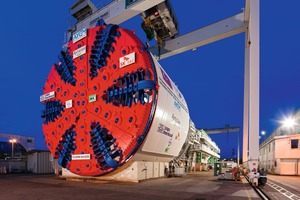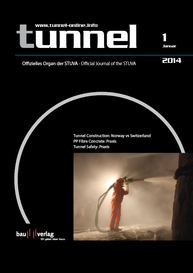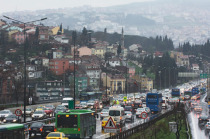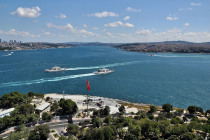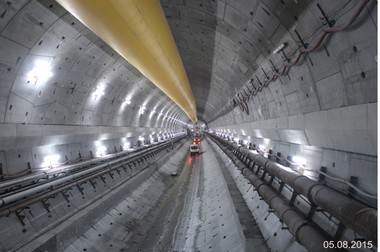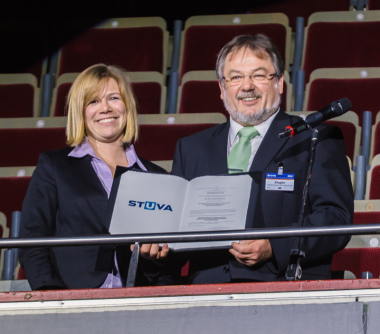Avrasya Tunnel –
New Bosporus Link
Up till now 2 widely spanned bridges and ferries have represented the sole road links between the Asian and European suburbs of Istanbul. For the around 14 million inhabitants of the city and international transit traffic this precarious situation is to be improved by setting up a new road tunnel under the Bosporus – the Avrasya Tunnel.
The 3.4 km long tunnel bore is to be provided with 2 lanes per direction (2 x 2) arranged at 2 levels; the 5.4 km long approach road on the European side and the Kennedy Bridge on the other hand will be expanded from 2 x 3 and 3 x 3 to 2 x 4 lanes and the 3.8 km long approach section on the Asian side connecting with the Istanbul-Ankara highway from 2 x 3 and 2 x 4 to 2 x 4 and 2 x 5 lanes.
The tunnel has a 5 % gradient from both sides with the distance from the tunnel floor to the water surface amounting to 106 m at its deepest point as well as 38 m at the European portal and 54.60 m at the Asian one. The shallowest overburden will amount to 26 m. According to extensive geological and hydrological investigations alternating layers of sand and gravel, limestone and claystone have to be penetrated – given up to 12 bar water pressure.
A 3,340 m long EPB shield with 13.5 m diameter, an output of 4,900 kW and 23,290 kNm torque is being used to drive the tunnel: the S-762 from the Herrenknecht AG, which was completed at Schwanau at the beginning of July, 2013. It was named “Yildirim Bayezid” after the sultan, who successfully expanded the Ottoman Empire at the end of the 14th century. After dismantling, transport and on site assembly the Mixshield will be ready to start tunnelling at the end of 2013 from an access shaft on the Asian side. A daily rate of advance amounting to 8 to 10 tunnel metres is predicted. The tunnel will be lined with reinforced concrete segments including the intermediate ceiling and will be fitted with modern lighting, ventilation, sound absorption, photo monitoring, fire extinguishers, paths at the sides (evacuation system) and an escape lane every 600 m.
The tunnelling machine is manufactured in keeping with a novel cutting wheel concept, thanks to which cost and time-consuming accesses for maintenance operations under compressed air can be minimized. The cutting wheel can be reached from the rear section under atmospheric pressure so that the roller bits and a large proportion of the cutters can be replaced from there. Furthermore the EPB shield is equipped with a special newly developed lock system, permitting compressed air accesses far in excess of 5 bar to be accomplished if need be as well as wear detectors so that replacing tools can be planned accordingly. The responsible contractor is the Turkish-South Korean YMSK Consortium comprising Yapi Merkezi Insaat ve Sanayi S.A. and SK Engineering & Construction Co. Ltd. ⇥G.B.

